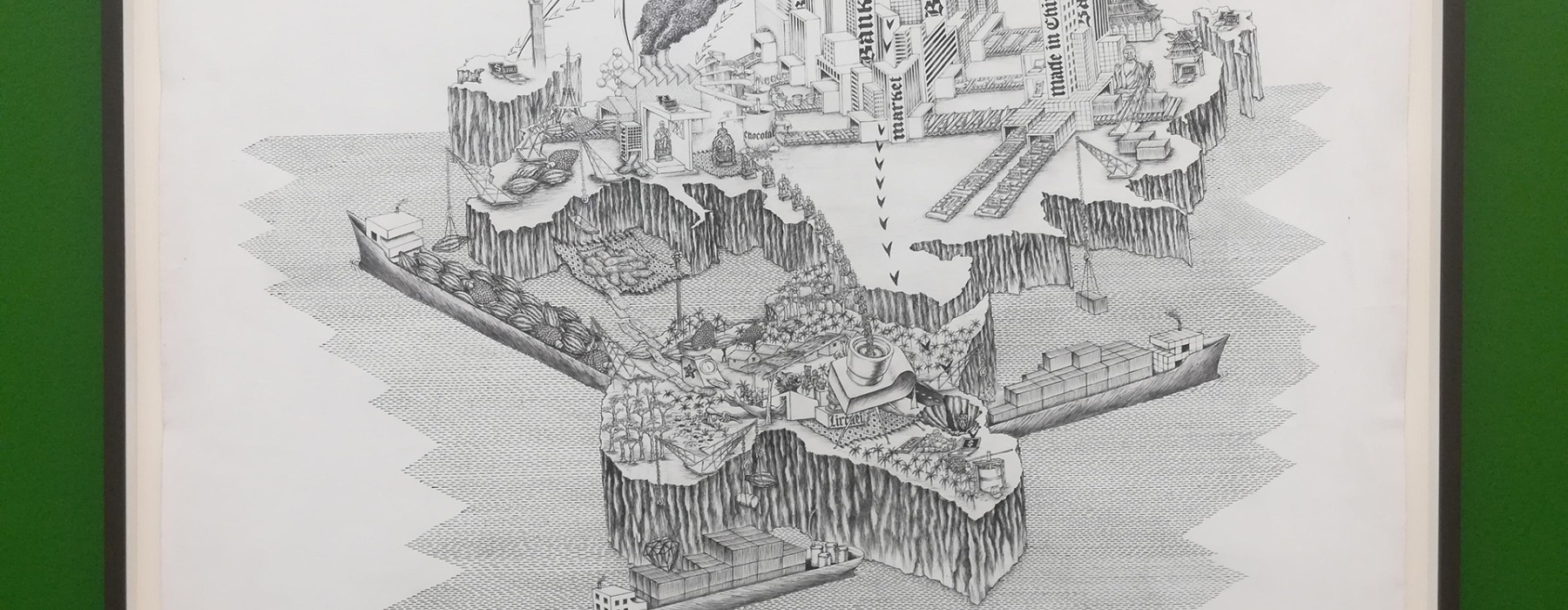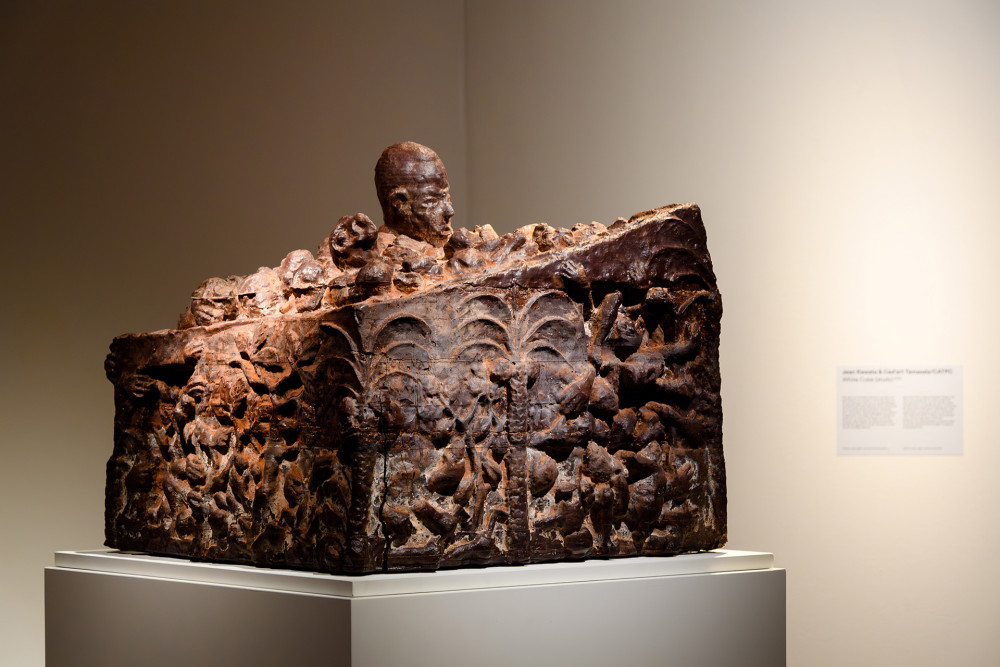
This plantation used to belong to Unilever, who took the land and exploited its labourers. CATPC members seek to decolonise their lives through a cooperative, community-based approach to art and agro-forestry. They make, sell, and exhibit art about their situation to earn funds to buy back parcels of their land. They call their land the “post-plantation” and organise shows in their White Cube museum.


